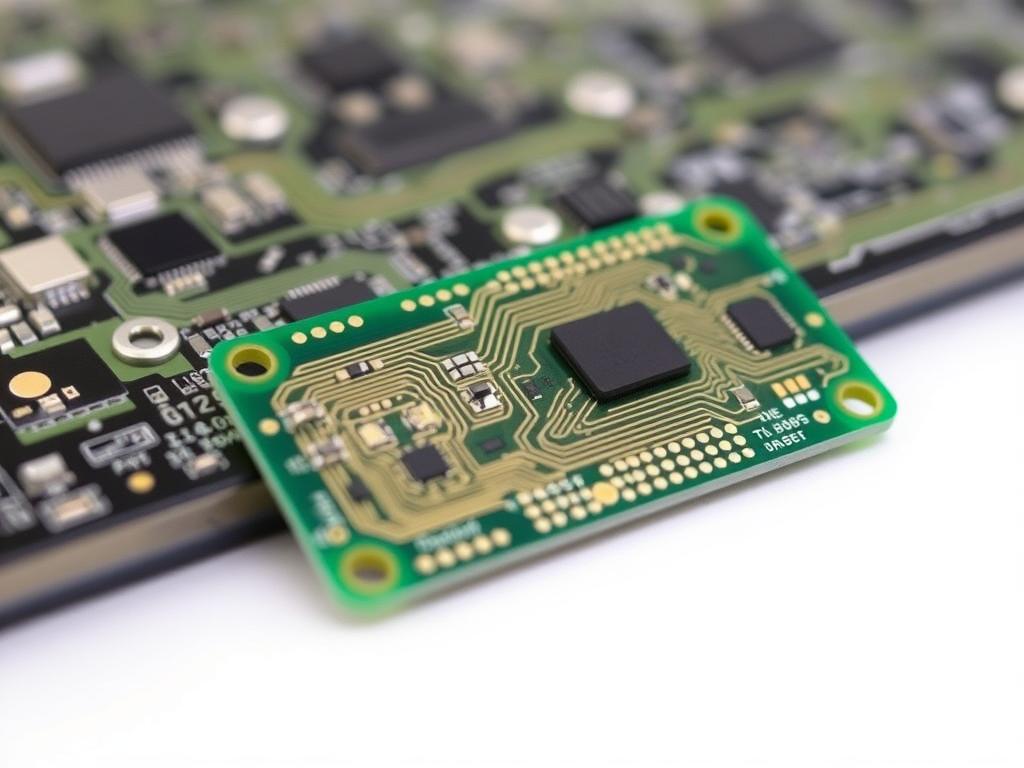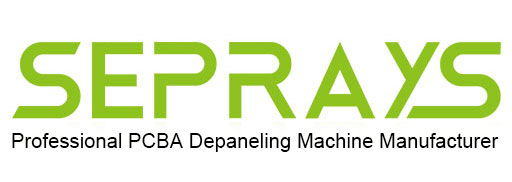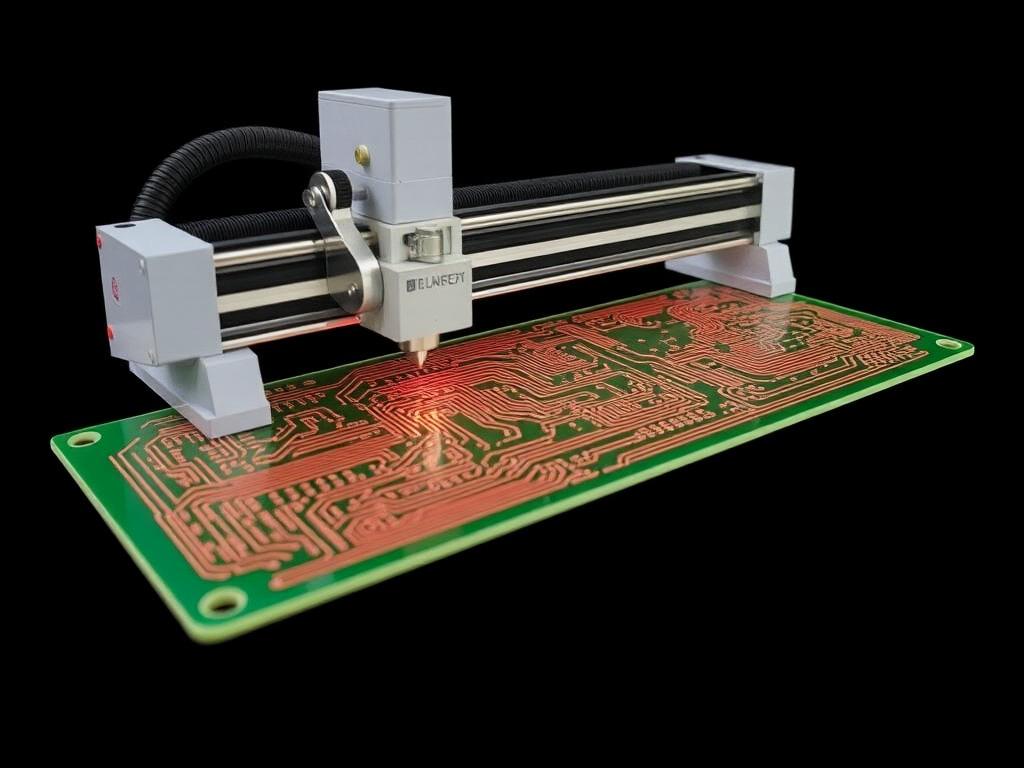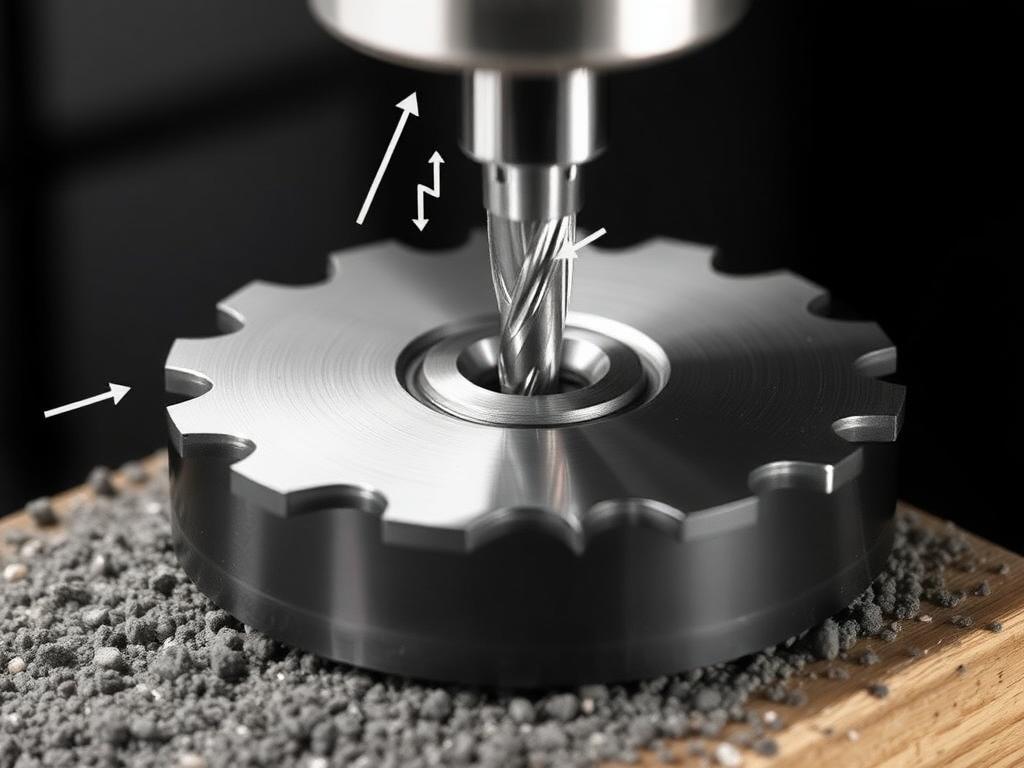![]()

PCB depaneling for wearable devices
From Manual to Laser: A Deep Dive into PCB Depaneling Methods
As someone with over 20 years immersed in the 印刷電路板 industry, I’ve seen firsthand the incredible evolution of PCB分板. From rudimentary manual methods to the precision of 雷射分板, the way we separate individual 電路板 has dramatically changed. This article isn’t just a technical overview; it’s a journey through the different approaches, highlighting the pros, cons, and why choosing the right method is crucial for efficient and high-quality 線路板製造. Whether you’re a seasoned engineer or a 印刷電路板 enthusiast, understanding these nuances is key to producing top-notch electronic products. Let’s explore the world of PCB分板 together.
What Exactly is PCB Depaneling and Why Is It Necessary?
As someone who has seen countless 多氯聯苯 go from large panels to individual 電路板, I can tell you that PCB分板 is an absolutely critical step in the 製造工藝. Imagine a sheet of connected 多氯聯苯 – that’s how they’re created in order to maximize efficiency. 分板 是 去除的過程 those individual 印刷電路板 from the larger panel after all the components have been placed and 焊接 has been applied, ready for use in 電子設備. This stage, sometimes also called singulation, is when we carefully separate the individual 電路.
The purpose of this process is simple: to transform a large, unwieldy panel of 多氯聯苯 進入個體 電路板 that are essential for all kinds of electronic applications. These 電路板 are then ready to be integrated into various electronic assemblies. Without 分板, we wouldn’t have the individual, functional boards needed for everything from smartphones to industrial equipment. As these pcbs are typically produced on a larger panel, 分板 is what makes each one a standalone product.
What are the Different Depaneling Methods Used in PCB Manufacturing?
Over the years, I’ve used and seen several PCB分板的方法 in action. From the older techniques to state-of-the-art methods, each has its own strengths and weaknesses. In the early days, we relied on manual methods, which involved physically breaking apart the 多氯聯苯. While this was simple, it was also time-consuming and prone to errors. Then came the introduction of 沖床 tooling, where a tool is used to create a separation through a specific die, creating a more uniform separation.
However, the real advancements came with the use of automated machinery. We started using router cutting, which employed a spinning tool used to cut along the designated separation line. This technique provided much better accuracy and efficiency compared to manual methods. Now, 雷射分板 is becoming increasingly popular due to its precision and ability to cut complex shapes, and 雷射路由 is rapidly becoming the most used 切割方法. Each of these 分板方法 is still used today, and the choice depends on factors such as the type of 印刷電路板, desired precision, and 吞吐量 要求。
How Does Router Cutting Compare to Other PCB Depaneling Techniques?
As someone who’s worked with both 路由器 cutting and other techniques, I’ve seen the pros and cons firsthand. 路由器 cutting, a method I’ve used extensively, involves a spinning bit that precisely separates individual printed 電路板. It’s a workhorse in the industry, offering a balance of speed and accuracy. However, it’s not perfect for every situation.
主要優點之一 路由器 cutting is its ability to handle various 基材 materials and thicknesses. It’s reliable and has a relatively low cost of operation, making it a go-to for many 印刷電路板組裝 plants. However, there are downsides. 路由器 cutting introduces 機械應力 到 電路板, which can be a problem for sensitive components, particularly around the 焊點. This stress may also lead to micro-cracks or warping, especially on very thin 多氯聯苯. Additionally, the 割縫寬度, or the amount of material removed by the cutting bit, can sometimes be quite large. This can limit how closely we can pack 多氯聯苯 together on a panel, which increases waste. Comparing this to 雷射分板, 這 路由器 technique is less precise, and introduces more stress.
What is Laser Depaneling and How Does it Work?
雷射分板 has always fascinated me, even after years of working in the 印刷電路板 industry. It is a cutting system that has really changed the industry, using a focused 雷射光源 分開 individual circuits from the larger panel. Unlike mechanical cutting systems such as a 路由器, 雷射切割 is a non-contact process, which greatly reduces the 機械應力 和 part induced stress 於 電路板. This is particularly beneficial for sensitive components and high-density layouts.
The process involves directing a 紫外線雷射 beam with extremely high energy density onto the 印刷電路板。這 雷射 vaporizes the material along the 切割線, creating a very narrow 割縫寬度 compared to traditional methods. The precision of the 雷射分板 is extraordinary. It is possible to create very fine and intricate cuts and allows for complex shapes that cannot be achieved with a 路由器, for instance. This method is great for intricate designs and especially beneficial when working with 彎曲 和 rigid flex pcbs, which are more susceptible to mechanical damage. However, one drawback of 雷射分板 is that it’s typically a slower process than 路由器 cutting, which can lead to lower 吞吐量.
How is Laser Routing Revolutionizing the PCB Industry?
The introduction of 雷射路由 has been transformative in the PCB製造業. It represents a significant step in the evolution of pcb depaneling and continues to impact all aspects of our work. It’s not just about cutting; it’s about precision, flexibility, and the ability to handle increasingly complex 多氯聯苯.
Laser routing offers several significant advantages compared to traditional methods. First and foremost, its precision is unparalleled, with minimal 切縫, and it minimizes the risk of damage. This is particularly important when working with 彎曲 和 rigid flex pcbs, which are often used in wearables and other sensitive applications. The non-contact nature of the 雷射 means there’s no risk of stressing the delicate components and the extremely precise 聚焦光斑尺寸 ensures clean and accurate cuts, vital for the smaller components we use today. I’ve personally witnessed how 雷射路由 has enabled us to produce incredibly complex board shapes and features that simply weren’t possible with traditional methods, making it an essential technology for advanced electronics. It is also far more flexible than 路由器 或者 沖床, as the 雷射 can be used to cut along any designed 切割線, meaning new designs are easy to implement.
What Role Does Flex PCB Depaneling Play in Wearable Technology?
As someone deeply involved in the manufacturing process of flexible printed circuits, I’ve seen firsthand how crucial flex pcb depaneling plays, especially in the booming market of wearable 技術。 Flex pcbs 和 rigid flex pcbs are the cornerstone of many wearables and other applications that require miniaturization and flexibility. These thin and flexible circuit boards enable designers to create devices that conform to different shapes and offer greater freedom in the mechanical design of 電子設備.
Flex pcb depaneling plays a pivotal role in the manufacturing process of these 柔性電路板. Wearable devices, such as smartwatches, fitness trackers, and other wearables, all rely on these flexible 電路板。這 process of flexible printed circuit board separation is particularly challenging because the 彎曲 materials are extremely sensitive to stress, and flex pcbs are even more susceptible to damage than rigid 多氯聯苯. 雷射分板 通常首選 柔性電路板 separation due to its non-contact nature and precision. This method ensures that the 多氯聯苯 are cleanly separated without introducing the 機械應力 or damage that may result in damage of the components or 焊點.
What is the future for PCB Depaneling systems?
的未來 PCB分板 is about automation, flexibility, and even greater precision, as I have seen the technology evolve over the years. The trend is towards creating more efficient, versatile, and intelligent 分板系統. We are likely to see even more integration of 雷射路由 technology, not just due to it’s greater precision, but also due to its flexibility for working with new designs. As 多氯聯苯 become smaller and more complex, the need for precision laser pcb depaneling systems will grow significantly.
Beyond the 雷射光源, automation is becoming key. This not only speeds up the 分板工藝 and reduces labor costs, but it also improves consistency and reliability. The PCB分板 field will become more advanced, with 分板系統 integrating real-time monitoring and feedback systems to ensure quality, and adaptive systems that can adjust to variations in materials and designs automatically, minimizing waste and optimizing 吞吐量. The future of PCB分板 is a symphony of high-precision machines and intelligent control systems.
Why is precision so critical in the Depaneling Process?
In the world of 印刷電路板製造, precision is not just a nice-to-have; it’s an absolute necessity. The 分板工藝 is the last step before these individual printed 電路板 are integrated into devices, and if this step is not done precisely, it can lead to problems down the line. I’ve seen firsthand how even small errors in 分板 can result in faulty products, delays, and additional costs.
The need for accuracy in 分板 stems from the delicate nature of modern 電路板。這些 多氯聯苯 are densely packed with small components, and any unnecessary 機械應力, or deviations in the 切割線, can cause damage. Issues can range from micro-cracks in the 基材 to damage to 焊接 joints or the components themselves. The use of precise techniques, like 雷射路由, ensure that the 多氯聯苯 are separated cleanly, minimizing the risk of defects. This level of precision ultimately contributes to higher quality products and greater reliability of the 電子設備.
What are the key components of an automated PCB depaneling system?
Having worked with automated 分板系統 for years, I’ve come to appreciate the importance of each component and how they all work together to ensure high-quality 印刷電路板 separation. These complex systems are the backbone of efficient 印刷電路板製造, and several key components are crucial for proper operation.
The most fundamental component of any automated system is the handling system that move the 多氯聯苯 from the in-feed to the out-feed. This system ensures the correct positioning for the cutting systems, whether it is a 路由器 或一個 雷射. The vision system, incorporating cameras and sophisticated software, allows for precise alignment of the 切割線, ensuring consistency and accuracy. Another critical component is the control system, which manages the entire operation. This includes the computer controls, and the interface which can allow operators to monitor progress and make adjustments as needed. In a 雷射PCB分板 system, the 雷射光源 itself is a critical component, responsible for the precise separation of the 電路板.
Final Thoughts on Choosing the Right Cutting Systems
Throughout my career in the pcb manufacturing industry, I’ve learned that choosing the right cutting systems 為了 分板 is crucial. The process is not just about separating 多氯聯苯; it’s about efficiency, precision, and minimizing waste. We’ve gone from manually breaking 多氯聯苯 apart to using sophisticated machinery, so the correct choice of 分板法 depends on the specific requirements of your product.
For example, if you’re working with flex pcbs or high-density layouts, you might be better served by the precision and low-stress nature of 雷射分板 或者 雷射路由. However, if you’re dealing with less sensitive designs and lower volumes, 路由器 cutting might be a cost-effective option. The key is to evaluate all your needs: the complexity of the 印刷電路板, the required 吞吐量, and sensitivity to 機械應力, and so on. This will ensure that you choose the best possible 切割方法 適合您的具體應用。
Remember, the goal of 分板 is to produce high-quality 電路板 that meet all specifications and requirements. As the technology continues to advance, I’m confident that the future of 分板 will lead to ever greater levels of efficiency and precision. At PCB分板, we are dedicated to providing the best technology for your business, from PCB 鏤銑機, 到 V型槽分板, 和 PCB雷射分板 systems. We offer solutions from manual to laser, and we can advise you on the best method to suit your manufacturing requirements. Don’t hesitate to contact our sales team for a quote, or if you require assistance with PCB分板.
- To see the full range of our PCB銑刀分板機, visit our 產品頁面.
- If you would like to know more about V型槽分板, we have a complete list of products 這裡.
- For those interested in the latest in PCB雷射分板 see our page
- You may be interested in our PCB/FPC沖孔機 solutions that we offer 這裡.
- To see our entire range of 自動化設備, please click 這裡
- And for a complete list of 配件, see our page.
常見問題解答
How can I minimize stress on my 多氯聯苯 期間 分板? Choosing a non-contact method such as 雷射分板 is the most effective way to 最小化 stress on your 多氯聯苯 期間 分板 過程。 Laser routing avoids the 機械應力 那 路由器 和 沖床 methods can impose.
What is the best 切割方法 為了 flex pcbs? 雷射分板 is generally considered the best method for flex pcbs 和 rigid flex pcbs. Its precision and minimal 機械應力 ensures that delicate boards are separated cleanly and without damage.
What’s the difference between 路由器 cutting and 雷射路由? 路由器 cutting uses a spinning bit to separate 多氯聯苯, which creates 機械應力, and produces a wider 割縫寬度. Laser routing, on the other hand, uses a focused 雷射 beam. It is a non-contact process, which eliminates 機械應力 and provides much more accurate cuts with a narrower 割縫寬度.
What factors should I consider when choosing a 分板系統? When choosing a 分板系統, consider factors such as the types of 多氯聯苯 you’re working with, desired precision, 吞吐量, 切縫, and the level of automation you require.
Can you integrate the 分板系統 into a full production line? Yes, all the 分板系統 that we supply can be integrated into a full production line, with full automation. We offer solutions for in-line 表面貼裝技術 production, and many other options. See our SMT整線設備 頁面了解更多詳情。
概括
- PCB分板 is essential for separating individual 電路板 from larger panels, and is a critical step in the 製造工藝.
- 不同的 分板方法 exist, including manual, 沖床, 路由器 cutting, and 雷射分板, each with its own pros and cons.
- 路由器 cutting is a common method but can induce 機械應力 and is not suitable for all designs.
- 雷射分板 provides unmatched precision and minimizes stress, making it ideal for flex pcbs, 和 rigid flex pcbs, along with complex designs.
- Laser routing is revolutionizing the industry with its high precision and ability to cut complex shapes.
- Flex pcb depaneling is vital for the 製造工藝 的 wearable technologies, and other applications that require flexible boards.
- 的未來 分板 involves greater automation, precision, and real-time monitoring.
- 選擇正確的 分板系統 depends on the specific requirements of the 印刷電路板 design and application.
- Precision is key to ensure the high quality of the final product and avoiding any damage during the 去除的過程 這 individual circuits.



